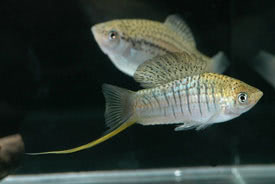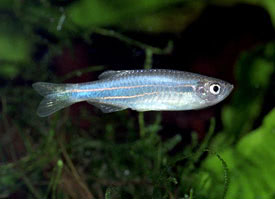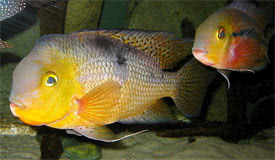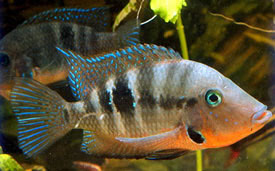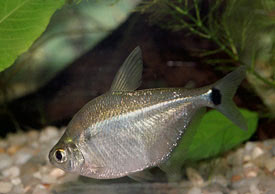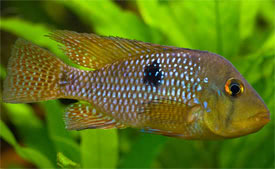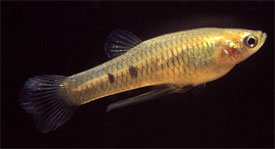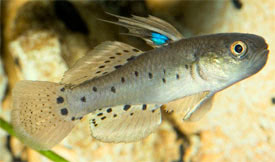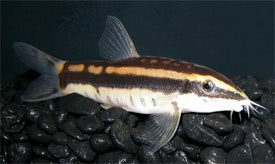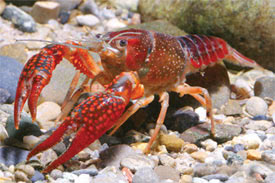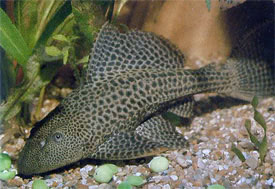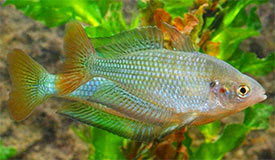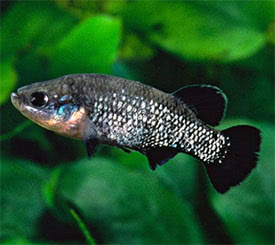
 Magyarul / Hungarian
Magyarul / Hungarian
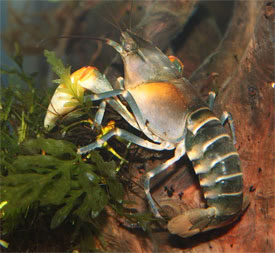
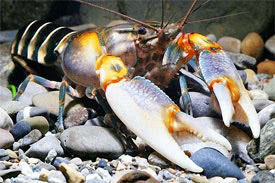
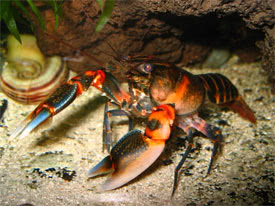
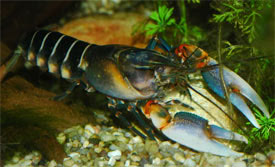
- Scientific name: Cherax peknyi
- Synonyms: Cherax sp. zebra, Cherax sp. tiger, Cherax cf. papuanus, Tiger Crayfish
- Common name: Zebra Crayfish
- Group: Freshwater invertebrates
- Habitat: Indonesia, Papua New Guinea
- Size: 12 cm
- Biotope: Inhabits in the Fly River drainage, usually in slow-flowing forest streams, and in still waters.
- Social behavior: Quite peaceful and shy crayfish, usually active at night. Can be kept in a community tank, but they may become aggressive to other crayfish, especially when there aren’t enough hidig places.
- Diet: Omnivorous; unfussy eater, it will readily accept any live and dried food (tubifex, snails, bloodworms, fish and green vegetables). Crayfish may eat aquatic plants, or damage them when digging.
- Breeding: Quite easy
- Tank: Minimum 100 litres
- Population: 1 pair for 100 litres
- Decoration: They are excellent escape artists, they can climb out of the water on the power cable of a filter, so their tank must be covered. Provide many hiding places such as clay pipe, rocks and hollow roots. Use sand as substarte.
- Temperature: 20-26 °C
- pH: 6.8-8
- Hardness: 5-20 NK°
- Lifespan: 3 years
Description: Zebra Crayfish is a small lobsterlike freshwater crustaceans with a thin, but tough exoskeleton that it shed during development. There are some different color variations existing, but most zebra crayfish have a dark brown color, with a yellowish to orange coloring on their carapace and claws. Some of them have white and bluish claws. They have wide, white stripes on their tails. Zebra Crayfish are collected and eaten by the villagers in their natural habitat, particularly when the water levels are low during the dry season. They usually found in burrows in the clay in the riverbank, or under logs and in crevices and holes in submerged trees. Its pretty color pattern makes this crayfish very popular in the aquarium trade. Young zebra crayfish will molt several times during their first year of life, as they grow quickly, while matures will molt only once or twice a year. The zebra crayfish will hide when it molts, and will not emerge from hiding until its new exoskeleton is hard, because it is very vulnerable after shedding. The shed exoskeleton as a source of calcium and is typically eaten by its owner or other crayfish. Make sure their tank is well filtered and well aerated.
Adult males are stronger built, and have larger claws than females. Zebra crayfish reproduce in freshwater, and it is usually not a problem getting them breed in captivity. The number of eggs laid is determined by the size of the female. They become sexually mature at 8-10 cm in size. Male will transfer sperm which the female can hold onto for long periods of time. The eggs hatch in about 5 weeks, and the offspring will hide for a week or two until they grow. If not given sufficient space or hiding places, young will cannibalize each other, mostly during molts.








